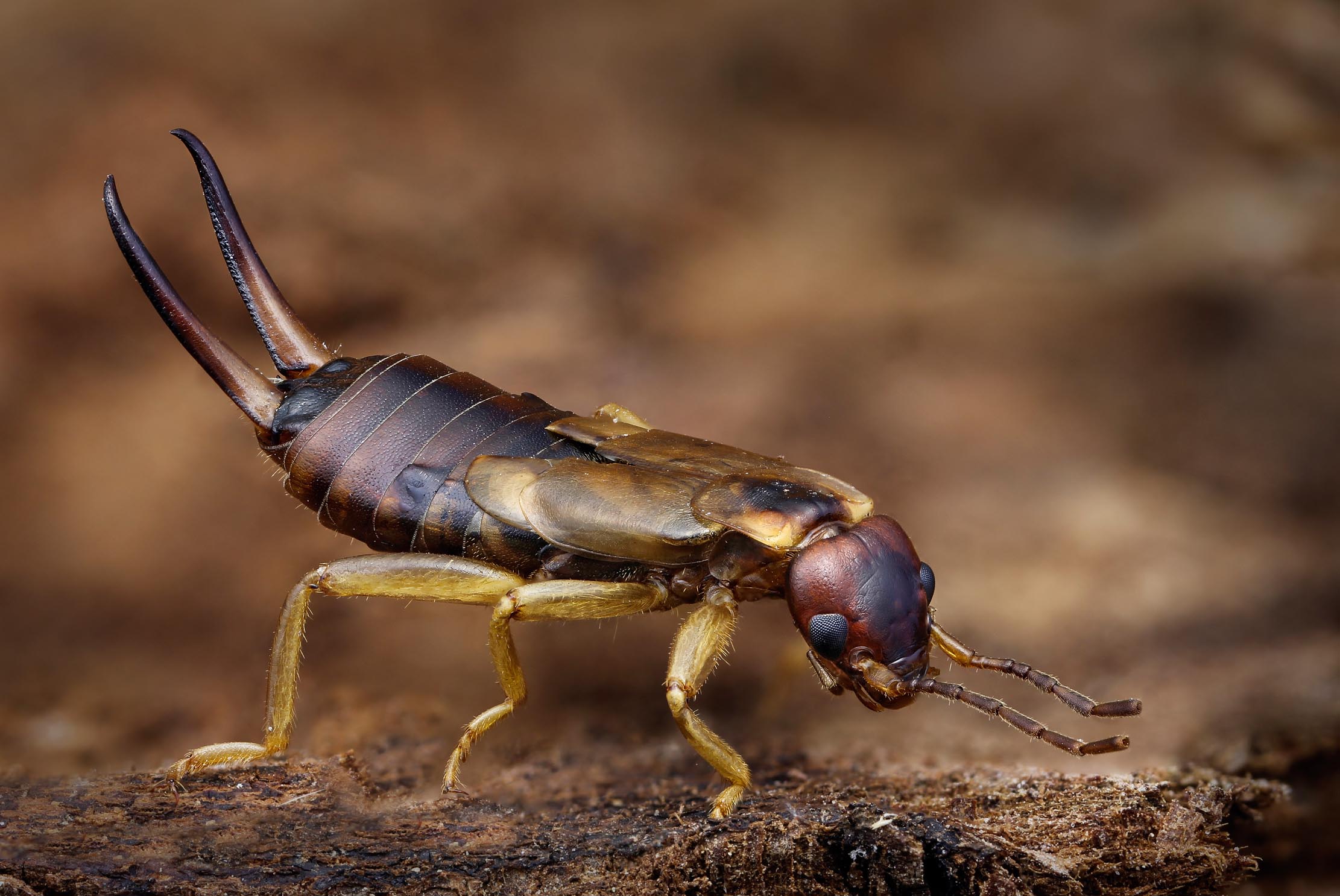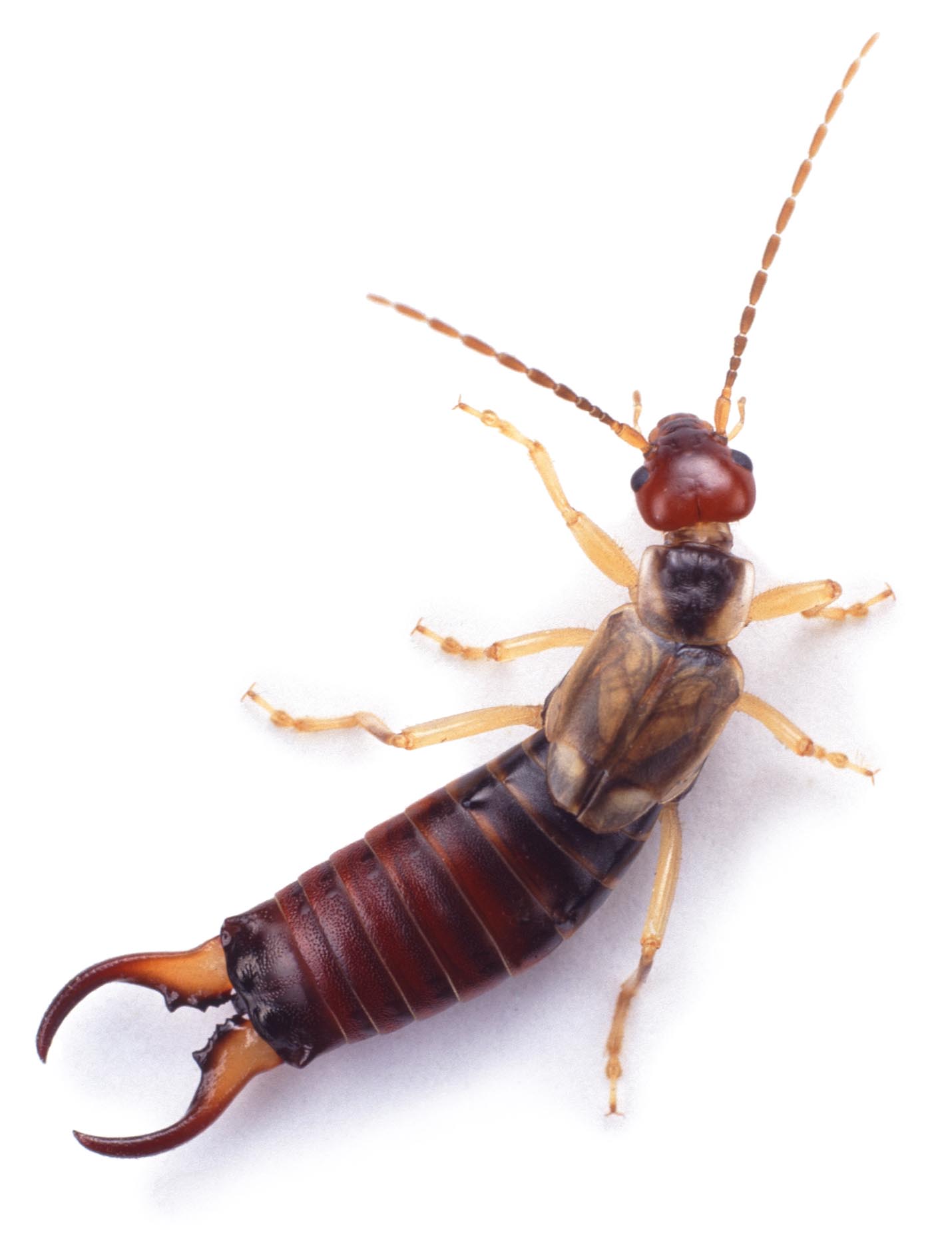Curious Questions: Do earwigs go in your ears?
For centuries earwigs were believed to be adept at entering our ears so as to lay eggs in the brain, sending us mad — but as Ian Morton finds, no creature has been more unfairly condemned. He celebrates this curious creepy crawlie in all its glory.


The children learned the song at Mrs Kiddy’s Barnardiston pre-prep school in Suffolk and it became a party piece.
I’m very fond of earwigs, they have such shiny backs, As if the day is raining and they are wearing macs. They hide in gay nasturtiums and all that I can see Is just a little pointy tail a-wiggling at me. My granny screams in horror whenever one comes near. She says that it is trying to climb into her ear. But I know that’s all silly, for they are much too wise To choose such a hidey-hole in which to spend their lives.
Infant voices thus dismissed one of the oldest myths in the insect world — and possibly the first myth to determine an insect’s name, for it comes directly from the Old English for ear (eare) and insect or beetle (wicga). An old name for an old creature — its fossilised ancestry dates back some 208 million years.
The name translates literally in most European languages, as in the French perce-oreille, the Dutch oorworm and the German ohrwurm, demonstrating that the belief in its invasive quest was continent-wide. It was mentioned in Pliny the Elder’s natural history of AD77, his counsel being to spit into the affected orifice, a kind companion, presumably, being enlisted to administer the cure. Advice in the 11th-century, Anglo-Saxon Old English Herbarium, a translation of a 5th-century Latin text, was to ‘take the big great windelstraw with two edges, which grows on highways, chew it into the ear, and he will soon be off’.
- In Robert Herrick’s poem Hesperides, a feast attended by Queen Titania included ‘beards of mice, a newt’s stew’d thigh, a bloated earwig and a fly’
- The earwig was known as the battle-twig in parts of rural England and was mentioned as such in Tennyson’s poem The Spinster’s Sweet Arts
- In some areas of Japan, the earwig is known as chinpo-basami, which translates as penis-cutter
Yet there are no recorded instances that an earwig ever did enter a human ear, let alone for the purpose of laying eggs, supposedly leading to deafness and madness. It is, perhaps, the original horror story and far more satisfying than an entomological suggestion that the hindwings, rarely if ever used, resemble the human ear, an observation unlikely to have been made by our Anglo-Saxon forebears.
The presence of wings was detected by Swedish entomologist Charles De Geer, who, in 1773, created the earwig family order Dermaptera from the Greek for ‘skin wings’. Fellow Swede Carl Linnaeus picked up on both the auricular appearance and the popular name to classify the common or European earwig as Forficula auricularia, the most numerous of the seven species found in this country. It belongs to one of 12 Forficulidae (meaning ‘little shears’), a suborder of 2,000 species found on every continent except Antarctica.

Their global variety makes our half-inch example seem mundane — according to eminent US entomologist May Berenbaum, several species live in the fur of giant rats in tropical Africa and feed off their dandruff, another bunch dwells on the bodies of Malaysian bats and the males of an American species sport a spare penis. Some species are lice-like parasites, some are blind cave-dwellers and some squirt a noxious liquid when threatened.
At more than 3in, the largest earwig recorded, the St Helena, was last seen on the island in 1967 — it suffered rodent predation and habitat loss as stones were taken for construction, featured on a commemorative stamp and, after four research expeditions, was declared officially extinct in 2014. Entomologists term it the ‘dodo of Dermaptera’. The reigning champion is found in Australia, a 2in insect formidably classified as Titanolabis colossea.
Exquisite houses, the beauty of Nature, and how to get the most from your life, straight to your inbox.
Our conker-coloured common earwig is not without interest, however. One glance identifies its sex. The tail-end forceps or cerci, which are curved in the male and straight in the female, are used for feeding, self-defence and mating. In human terms, their nipping potential is negligible. The similarity of the cerci to the Biblical eye of a needle, a wall entrance too narrow to admit a camel (Matthew 19:24), was noted by naturalist Thomas Mouffet in his 1634 Theatre of Insects.
Earwigs have a rather surprising family life. Mating takes place in the autumn, but the sperm is stored by the female in a spermatheca cell, perhaps for months, until conditions are ideal, with the pair securing themselves in debris, a crevice or in soil up to an inch below the surface. In early spring, the male leaves or is driven out and the female lays 20 to 80 pearl-like eggs over a two-day period, cleaning and protecting them until they hatch.
"You’ve got to bite the earwig first, chop-chop, before it bites you" — Roald Dahl, George's Marvellous Medicine
The nymphs undergo up to six molts on their way to adulthood, a process known as hemi-metabolism, the mother overseeing their first two molts and protecting them under her body. Any nymphs that lose a cerci can regenerate another. They feed on their egg casings, their own molted skins and on food regurgitated by the mother — if she dies, they may consume her body. It is a level of maternal care unusual in the insect world.
Earwigs live for about a year and are most active from May to September. They suffer predation by birds, insectivorous mammals, small reptiles and spiders and are subject to attack by a tachinid fly (Triarthria setipennis), which paralyses them and has been used to control their numbers, especially in the US.

There is no evidence that earwigs transmit disease. Omnivorous and active night feeders, they are a mixed blessing in horticulture, bad news for gardeners on whose prized dahlias, clematis and chrysanthemum blooms they like to dine, but welcomed by fruit growers because they abide in the bark cracks of fruit trees and consume aphids. The RHS says they should be tolerated as part of the natural order.
They had a function in the medieval Doctrine of Signatures, crushed earwig being advised as a treatment for ear problems. Nicholas Culpeper took the traditional view that the insects were themselves a problem, his English Physitian of 1652 recommending hemp juice as ‘very good to kill the worms in man or beast, and the Juyce dropped into the ears killeth worms in them and draweth forth Earwigs, or other living Creatures gotten into them’ (for centuries past, hemp juice pressed from the leaves and stems of the Cannabis sativa plant was a traditional nostrum).
According to Robert James, an 18th-century practitioner thought responsible for the early demise of poet Oliver Goldsmith, ‘oil of earwigs is good to strengthen the nerves under convulsive motions by rubbing it on the temples, wrists and nostrils. These insects, being dried, pulverised and mixed with the urine of a hare, are esteemed to be good for deafness, being introduced into the ear’.
Abundant and widely distributed as they are, earwigs do not appear in large numbers. Yet in Curious Facts in the History of Insects of 1865, Frank Cowan related that, in August 1755, in parishes near Stroud in Gloucestershire, ‘there were such quantities of earwigs that they destroyed not only the fruits and flowers but the cabbages, although of full growth. The houses, especially the old wooden buildings, were swarming with them: the cracks and crevices surprisingly full so that they dropped out oftentimes in such multitudes as to literally over the floor. Linen, of which they are fond, was likewise full, as was the furniture: and it was with caution any provision could be eaten, for the cupboards and safes flocked with those little pests’.
Perhaps Roald Dahl was unaware of this plague when he wrote in George’s Marvellous Medicine, in 1981, that Grandma advised the boy to eat unwashed celery complete with beetles and earwigs. ‘“A big fat earwig is very tasty,” Grandma said, smacking her lips. “But you’ve got to be quick, my dear. When you put one of those in your mouth, it has a pair of sharp nippers on its back end, and if it grabs your tongue with those, it never lets go. So you’ve got to bite the earwig first, chop-chop, before it bites you.”’

Credit: Alamy
The delights of dung: 11 things you never knew about cowpats
It attracts no public regard apart from taking care not to step in it, but it plays a big role
After some decades in hard news and motoring from a Wensleydale weekly to Fleet Street and sundry magazines and a bit of BBC, Ian Morton directed his full attention to the countryside where his origin and main interests always lay, including a Suffolk hobby farm. A lifelong game shot, wildfowler and stalker, he has contributed to Shooting Times, The Field and especially to Country Life, writing about a range of subjects.
